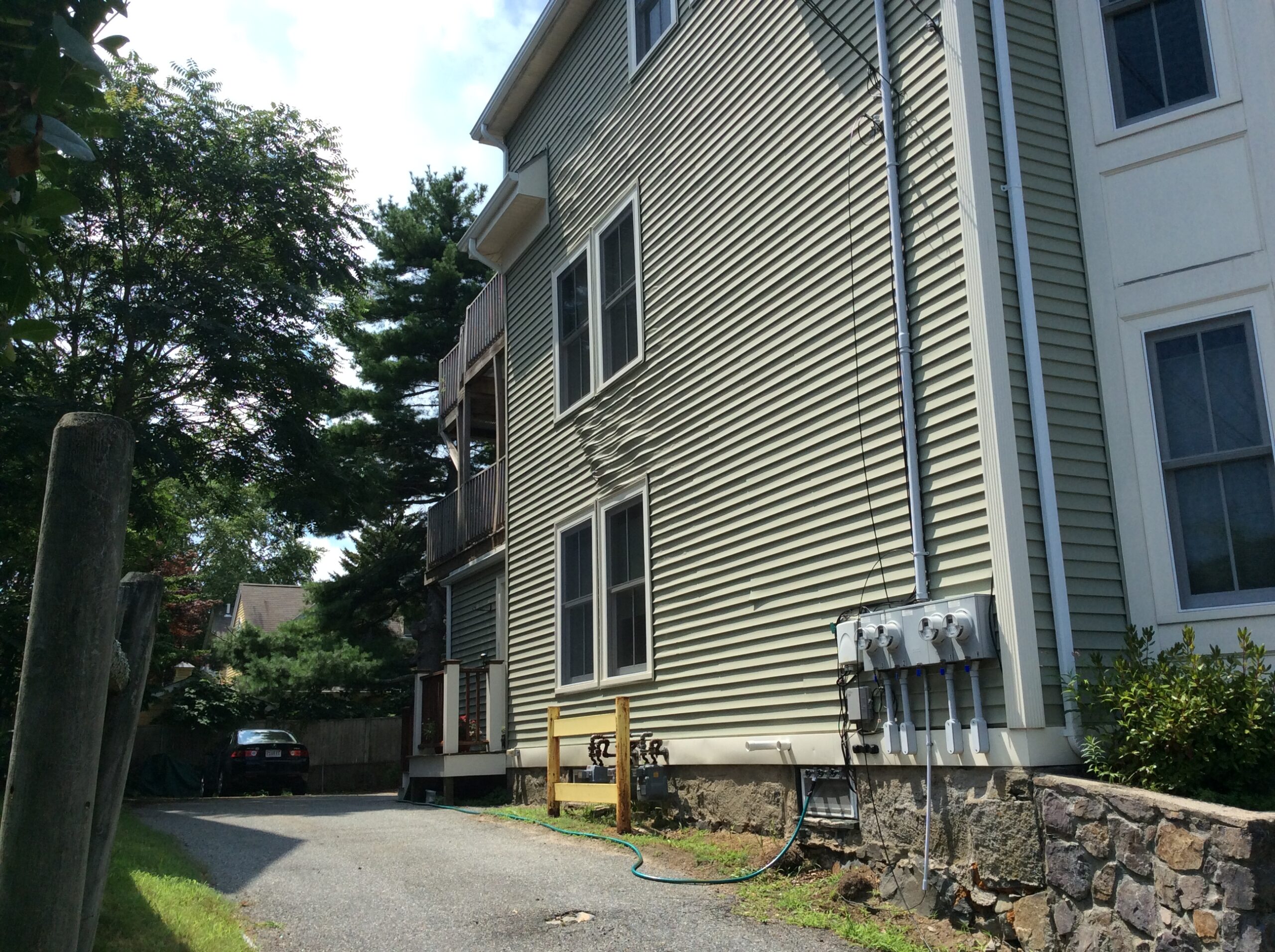Q: I was outside over the weekend and noticed that a small area of my home’s vinyl siding appears to be melting. My husband believes that the melting is being caused by a reflection off our neighbor’s window. Have you ever heard of this happening?

A: Thank you for your question. Yes, Yes, we’ve seen it before—and you’re not alone. While vinyl siding offers excellent value, durability, and low maintenance, it’s not immune to extreme conditions. One of the rare but frustrating issues we help homeowners resolve is melted vinyl siding caused by reflected solar heat from nearby windows.
If your siding has warped unexpectedly, the cause may surprise you. Fortunately, there are several effective solutions to prevent this from happening again.
What Causes Melted Vinyl Siding?
The main culprit is often Low-E windows, which are designed to reflect heat and improve indoor energy efficiency. These windows contain coatings such as titanium dioxide or crystalline structures that reduce heat transfer through the glass.
As a result, the reflected solar energy doesn’t enter the home—it redirects outward. Under certain conditions, this reflected heat can concentrate on neighboring vinyl siding, causing temperatures to exceed 250°F. Since vinyl siding begins to soften at around 165°F, that can lead to visible damage and warping.
Homes at Higher Risk for Melted Vinyl Siding
While not every home experiences this, certain factors increase the likelihood:
-
Proximity to neighboring homes
-
Low-angle sunlight in winter and spring
-
Double-paned Low-E windows with slight concavity
-
Lack of shading or landscaping
-
Darker-colored vinyl siding that absorbs more heat
In short, it takes a “perfect storm” of conditions to cause this issue. However, the results can be costly if you don’t act quickly.
6 Proven Ways to Prevent Melted Vinyl Siding
If your home has suffered from melted vinyl siding, here are six steps you can take to prevent it from happening again:
1. Install Full Window Screens
Full window screens are a simple, effective way to break up solar concentration. The woven mesh creates solar diffraction, which disperses the light and reduces its intensity. As a result, the heat that reaches your siding is much less damaging.
Ask our team for help identifying which windows may need screens—we’re happy to guide you.
2. Apply a PTI Screen or Window Film
PTI screens or films attach directly to the window glass. These reflective filters reduce solar glare and heat without interfering with function. This is ideal for casement windows, where full-frame screens may not be practical.
Unlike standard screens, PTI films allow your window to open while still shielding your siding.
3. Use Exterior Awnings
Adding an awning above the window can help block sunlight—especially when the sun is lower in the sky during cooler months. As a result, awnings provide consistent shading and reduce the chance of a heat beam forming.
They also add charm and architectural interest to your home’s exterior.
4. Replace Low-E Glass with Alternative Options
Not all energy-efficient windows pose a risk. If necessary, you can swap the glass for a different type that reduces the chance of intense reflections. We offer multiple custom window packages to fit both your energy goals and exterior needs.
Our experts can evaluate your current setup and recommend the best replacement option.
5. Plant a Landscape Buffer
Sometimes, nature provides the perfect solution. Strategically placed shrubs or small trees can act as a shield between the reflective window and your vinyl siding. In addition to offering protection, landscape buffers enhance curb appeal.
They also contribute to stormwater management and local biodiversity—an eco-friendly bonus!
6. Upgrade to High-Temperature Resistant Vinyl Siding
If your siding has already melted or warped, it may be time for a full replacement. Today’s high-performance vinyl siding options are designed to withstand temperatures exceeding 250°F.
Though more expensive than standard siding, this investment can save you from recurring damage and increase your home’s long-term value.
Why This Matters for New England Homes
Homes in Topsfield, MA and surrounding areas face unique challenges due to seasonal sun angles and close home spacing. In particular:
-
Winter and spring sun sits lower in the sky
-
Reflected beams become more concentrated
-
Many homes are located close together
-
Landscaping may not block window reflections
According to the Vinyl Siding Institute, pinpoint heat beams from Low-E windows can reach up to 300°F—well above the softening point of regular siding. Therefore, if you live in New England and have Low-E windows nearby, your home could be at risk.
How Coastal Windows & Exteriors Can Help
At Coastal Windows & Exteriors, we offer a complete range of solutions to help you avoid melted vinyl siding. Our team will assess your home’s exterior, identify risk factors, and recommend custom strategies to protect your investment.
We proudly serve Topsfield, MA and surrounding areas with:
-
Heat-resistant vinyl siding
-
Energy-efficient window options
-
Custom awnings and shading solutions
-
Expert consultations and free estimates
Final Thoughts: Avoid Melted Vinyl Siding for Good
In conclusion, melted vinyl siding may be caused by a rare combination of factors—but you don’t have to be caught off guard. By taking a proactive approach, you can prevent damage, maintain curb appeal, and protect your home year-round.
Whether you need new siding, updated windows, or just advice on the right screens or awnings, we’re here to help.
📞 Call us today at 978-304-0495
📩 Email us: svanderbilt@mycoastalwindows.com
🌐 Visit: mycoastalwindows.com to schedule your free estimate
At Coastal Windows & Exteriors, we’re committed to keeping your home beautiful, energy-efficient, and protected from even the most unexpected threats.





